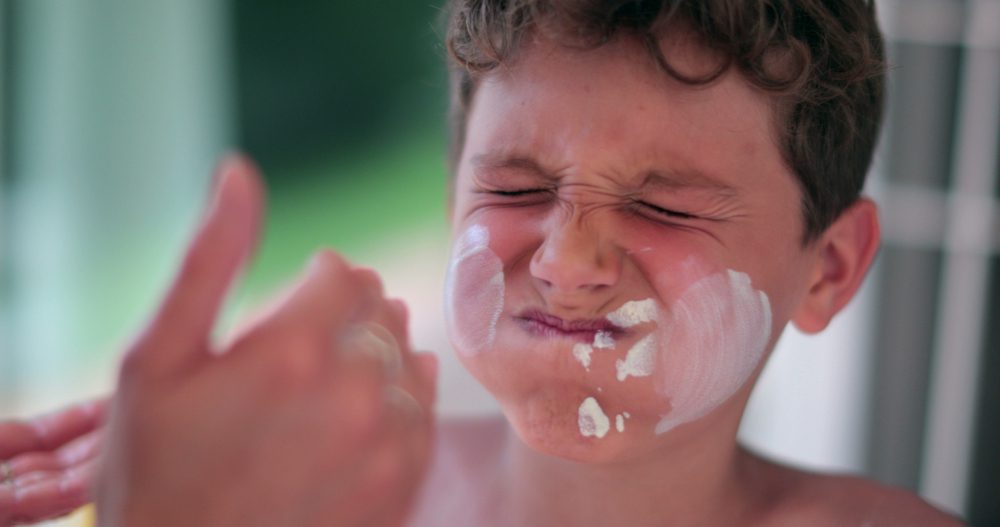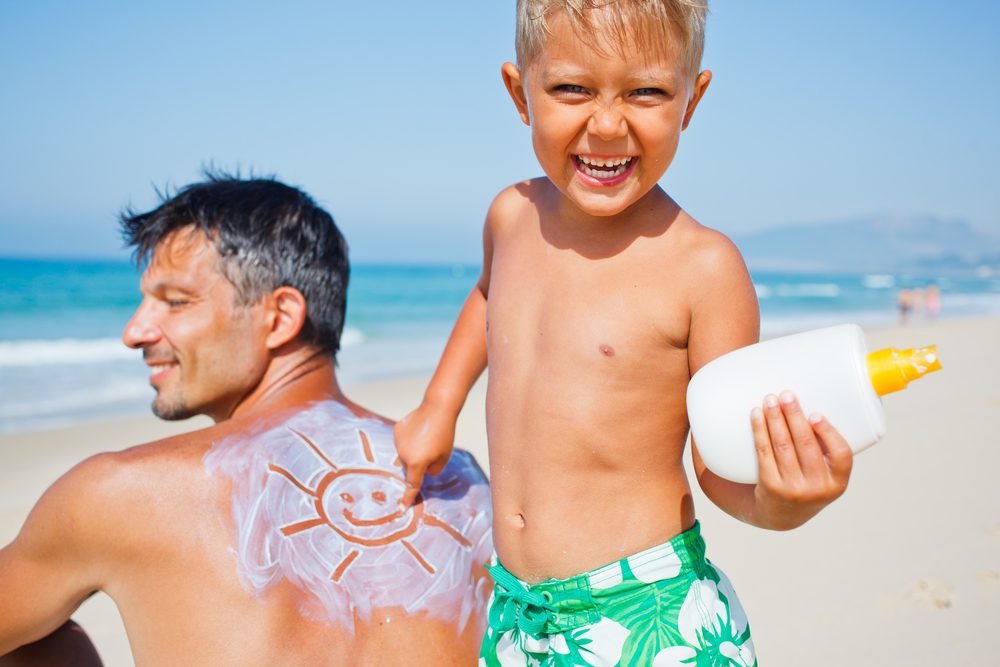Do you know how to use sunscreen correctly?
Only now we are slowly beginning to understand why it’s so important to wear sunscreen wherever we might be. And for that, we have to thank global warming. But apart from that, it shouldn’t be a habit we adopt only in the summertime, but throughout all seasons.
If you’re not already familiar with the idea of sunscreen, you should just know that the sun can be responsible for most of our skin diseases, including cancer. So in order to avoid any complications, a sunscreen with protective factors (SPF) can really save the day.
If you’re a sunscreen lover but you still manage to get burned after a round in the sunlight, maybe you’re doing something wrong. We’ll give you 11 places of your body you might forget to use sunscreen on, and next time you go to the beach you’ll be thanking us.

Some sides of the face
The face is the most common place to get a severe sunburn. Unless you spend all day lying on your tummy or living under a rock, the face is the first to be exposed directly to the sunlight. But what about when you apply sunscreen on your face and you still get irritated in some areas? Your temples, jawbone, and hairline might have been left behind. To avoid this from happening again, you can try applying the sunscreen to the face from the outside in, to make sure you don’t miss any spot. And don’t forget, for the face, it’s recommended to use SPF 30+!
Ears
I know we often forget about the ears because we couldn’t possibly imagine how we could get sunburned there, but we should be careful. Even when you’re wearing a hat and you are technically hiding your ears from the sun’s power, your ears might still be vulnerable.
So we recommend you not only to apply lotion on your ears as well but to make sure you reapply some more during the day. And when you do it, be sure to cover the tops of your ears, the back, and the area surrounding the ears. Trust us, it’s for the best.
Lips
Did you know that is just as important to use SPF on your lips, as well? Scientists say that the lips have thin skin with a little amount of melanin, so they have minimal innate protection from aging and damaging UV rays.
Plus, they’re just as susceptible to sun damage as the rest of your body, in conclusion, they’re vulnerable to skin cancer. You can use lip sunscreen that filters out the damaging UVB rays and protects you from skin diseases. Not to mention that the sunscreen will repair your lips, hydrate, and moisture them all at the same time.
The sides and the back of your neck
Another area of your body that can easily get away from your attention is the neck. To be more specific, some parts of the neck, like the sides and the back of it. You might forget your neck might also be exposed to the sun’s damaging light, but it’s often those parts that can hurt as well.
If you have long hair and you decide to pull it up in a bun or in a ponytail, make sure you also apply sunscreen to the back of your neck. Also, if you’re driving, you want to make sure you cover all areas that might be in the direct sunlight.
The scalp
The scalp is one of the most sensitive parts of your body when it comes to sunlight and heat. Not only because you could get a severe sunburn, but also because you can get a heat stroke. The symptoms of a heat stroke are difficult to manage, so why risk suffering from any of it when you can just be careful?
As the Skin Cancer Foundation says, wearing a hat is the best possible way to protect your head from the sunlight. If you want to add extra safety, you can spray some SPF on the top of your head or scalp to make sure you are not at risk.
The top of your hands
Scientists say that your skin starts losing collagen and elasticity if it’s exposed to the sun for a longer period of time. This might be the case in particular for the tops of your hands because they usually are neglected when applying sunscreen.
Our best advice is to make sure to apply sunscreen on the top of your hands as well and more often than on the other parts. Why? Because we use our hands in any kind of activity we might be doing, so they dehydrate faster than the rest of the body. We also recommend applying sunscreen on your hands in every season, because apart from having a protective agent, it also hydrates the skin.
The top of your feet
While many of us believe we didn’t miss a spot on our skin when using sunscreen, we often forget about the feet. And it’s unfortunate because the skin on our feet is highly susceptible to melanoma and other horrible forms of skin cancer. This happens particularly when we’re wearing any type of sandals and we forget about our feet.
Even so, doctors recommend we use SPF with 30 + protection when applying sunscreen on our feet, and make sure we don’t miss any spot. So next time you’re going to the beach or a walk in the park, make sure to layer some sunscreen onto the soles of your feet.

Your back
Applying sunscreen on your back might be one of the top 5 most difficult and annoying things to do when you’re at the beach. However, it is highly important. As uncommon as it is to miss a random spot on your back when applying sunscreen, you want to make sure you covered at least the most important parts.
If you are all by yourself and you can’t receive any help to rub the sunscreen on your back, you can try using a sheet, a rash guard or SPF clothing. No matter what you choose, it’s important you don’t let the skin on your back be damaged by direct sunlight.
Armpits & Underarms
Your armpits might be the last place you thought of applying sunscreen to. However, they should receive some extra care, because any skin that isn’t normally exposed to the sun is even more susceptible to burning, including your pits.
Our recommendation is to apply some SPF 30 + on your armpits before you use any deodorant or antiperspirant. This way, you’ll be giving your skin enough time to absorb the sunscreen. You’d still have to apply it constantly during the day, but at least you will be sure that area of your body will never get irritated and itchy from a sunburn.
Eyelids
Speaking of sensitive skin, don’t ever forget about your eyelids! As we said before, your face is in direct contact with the sunlight most of the day, so your eyelids should always get the protection they need, and by that, we mean sunscreen and a pair of sunglasses.
If you don’t know which type of sunscreen to use, physical sunscreens with zinc oxide or titanium dioxide can provide excellent protection and are recommended for people with sensitive skin. No matter what skin type you have, remember that sunscreen is also good as an anti-aging agent, so make a habit out of using it.
Any parts of your body covered by a swimsuit
When you are at the beach, one of the most common mistakes is to apply sunscreen the moment you arrive. By the time you got there, your skin was already exposed to harmful sunlight. The sunscreen needs an additional 15 minutes before it gets fully absorbed in the skin.
Plus, you’ll only apply protection to the parts of your body that are not covered by your swimsuit. To avoid that from happening, apply sunscreen when you’re fully naked. This way, you’ll make sure all the parts of your body are fully protected, no matter if you’re wearing any clothing or not.
Interested in more healthy tips? We sure have a lot more. You may also like this article: 11 Delicious Desserts Every Diabetic Can Tuck Into Today.













